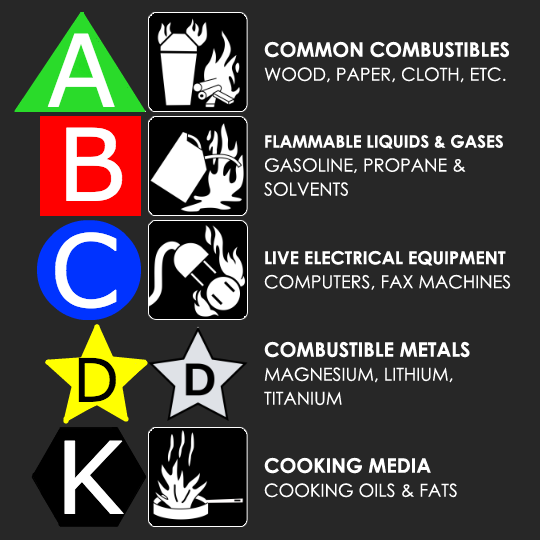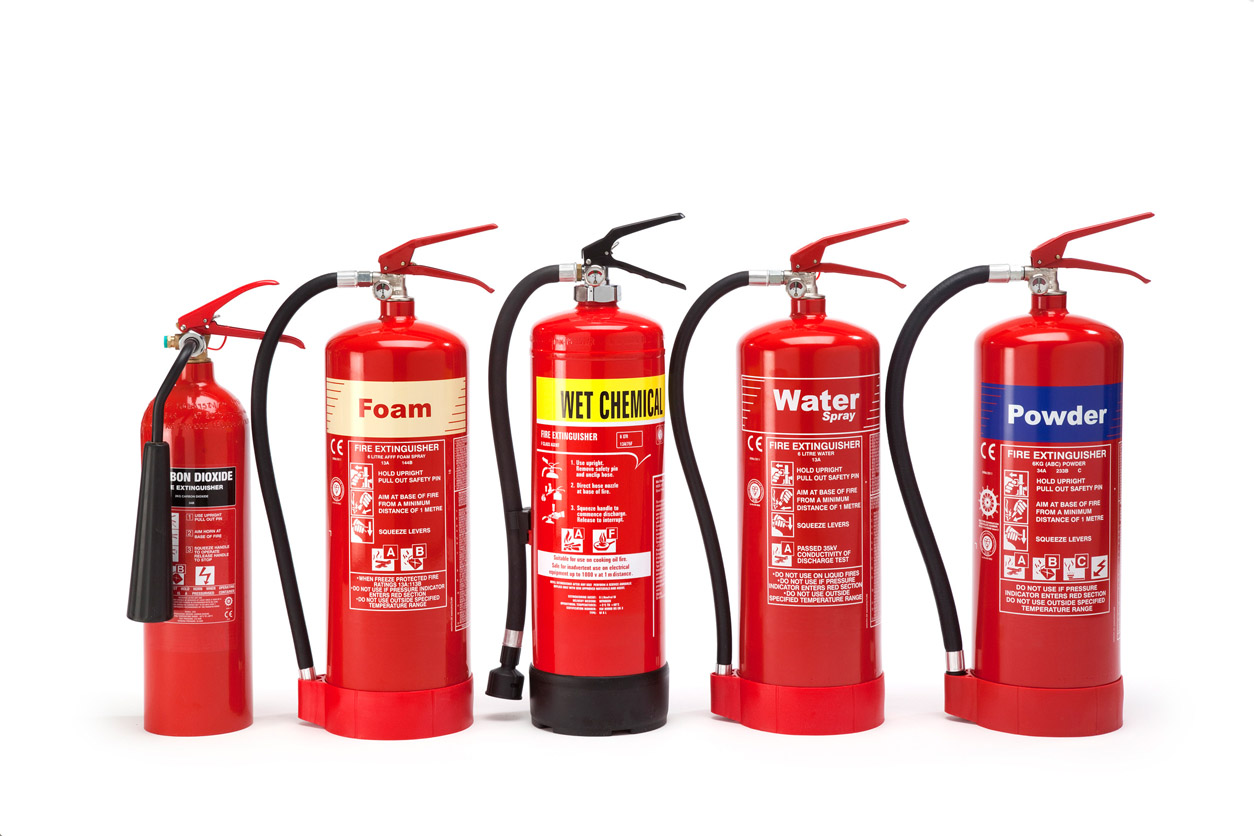What are the different types of fire extinguisher?
2 Answers
They remove either the air, fuel or heat (or all) component in the fire.
Explanation:
So before we get into how a fire extinguisher actually extinguishes fire, we need to understand when a fire burns.
Three things need to be present: air (oxygen gas), fuel, and heat. If one or more of these things are absent, a fire will not start.
That means the fire extinguishers removes 1+ of these criteria.
- Water Extinguishers - the most common type. Removes heat. Commonly used by firefighters.
- "Dry" Extinguishers - cuts the fuel. Uses compressed nitrogen. This is what you would use in case of a gasoline fire; water will worsen the situation.
#CO_"2"# Extinguishers - mixture of liquid and gaseous#CO_2"# . It removes the heat (because it's so cold - liquid state) and it removes the oxygen. This is the one with the white stream coming out.
Here's the classification for each:

These indicators are usually located as a band across the extinguisher:

Hope this helps :)
It depends upon which type of fire extinguisher you use........
Explanation:
This site lists the various types of fire extinguisher. They are categorized according to the type of fire that occurs. Mind you, when the $hit hits the fan and you have to use one of these in earnest, examination of the extinguisher contents will not be a priority.
The most common fire extinguisher is the carbon dioxide type, which replaces the oxygen around the fire with incombustible carbon dioxide; discharge also cools the fire and hopefully extinguishes it. These are not supposed to be used with metal fires; again, you use what is to hand.
In a laboratory, you should assess the likely risks and hazards, especially in regard to still fires (i.e. pentane or hexanes stills). Should these occur, sometimes you have to take a step back; the physical heat of such fires may prevent you from closing with it. This is when you trip the fire alarm.
When you work in a lab, and should you run the risk of small fires, usually the best way to extinguish it is to douse it with liquid nitrogen. Mind you, the fire may start again, when the liquid nitrogen boils off, but at least you can keep pouring in nitrogen.
You should have a word with your prof about the possible scenarios and hazards associated with your chemistry, and the appropriate means for dealing with it. The prof will have encountered such events before. Good luck.


